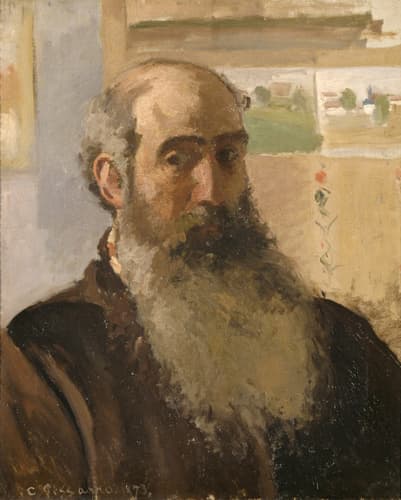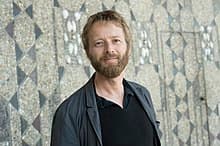Johannes Maria Staud: Sydenham Music
Camille Pissarro (1830–1903) was a Danish-French Impressionist and Neo-Impressionist painter who was born on the island of Saint Thomas in the then Danish West Indies.

Camille Pissarro: Self-portrait, 1873 (Paris: Musée d’Orsay)
He was sent for education in France at age 12, where he developed a taste for French art and received a good grounding in drawing and painting. He returned to St. Thomas at age 16 and kept up his art while working at the port as a clerk. At age 21, he decided to turn to full-time art and moved to Venezuela with the Danish painter Fritz Melbye, working in Caracas. He returned to Paris at age 25 and was an assistant to Fritz Melbye’s brother Anton, who was also a painter. After trying to take lessons at the École des Beaux-Arts and Académie Suisse, he gave up formal instruction and worked privately with Camille Corot. At the outbreak of the Franco-Prussian movement in 1870, he moved to England. As a Dane, he could not join the French Army. His style of painting, a forerunner to Impressionism, did not do well until he met up with Monet in London, and they studied the work of Constable and Turner, which confirmed their belief in open-air painting.
One of the paintings he did at that time was The Avenue, Sydenham, painted in 1871 and now in the National Gallery in London.

Pissarro: The Avenue, Sydenham, 1871 (London: National Gallery)
This was one of a dozen paintings he did in London from 1870 to 1871 and shows what was then a semi-rural suburb near Crystal Palace. He shows Lawrie Park Avenue, with the Church of St. Bartholomew in the background, in spring. The National Gallery speculates that elements of the work were designed to draw in an English buyer: the church tower has been elongated and the number of windows along the nave was reduced to lighten the building’s effect, the work shows a proper perspective, and provided ‘an acceptable degree of finish and picturesque motif [that] were perhaps intended to appeal to English buyers wary of the swift brushwork of Impressionist painting’. This doesn’t depict working people but people at leisure in the spring.

Johannes Maria Staud
The Austrian composer Johannes Maria Staud (b. 1974) lived in Sydenham for two and half years and walked down this avenue weekly. He called Pissarro’s picture ‘one of his loveliest’ and chose to pay homage to his temporary home with his trio Sydenham music. He wanted to depict the avenues with a ‘thoroughly quiet and fragile piece’. The composer admits he wasn’t entirely successful in his attempt: ‘As it happens, I could not completely do justice to this intention, as a stirring sonority disturbing the apparent idyll forced itself finally and suddenly to the surface’.
Johannes Maria Staud: Sydenham Music (Trio Partout)
Pissarro’s Sydenham was just on the edge of the city and had only recently been connected to the city by train. It was still quite rural and quiet. A current picture of this street on Google maps still shows it as tree-lined but now also lined with residential houses. The sense of leisure in Pissarro’s painting is missing but the sky is still blue.
For more of the best in classical music, sign up for our E-Newsletter
